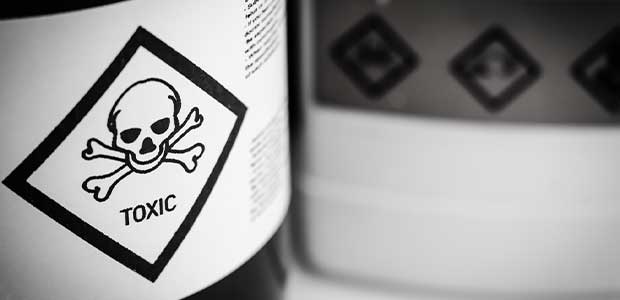
Proper Procedures to Follow if Exposed to Toxic Chemicals at Work
Employees and employers can take steps to prevent these types of emergencies.
- By Rupert Jones
- Mar 10, 2023
Many professions and workplaces expose their employees to toxic chemicals. Without proper training, employees are at a greater risk of injury from these substances. Employers have a responsibility to keep their employees safe before, during and after chemical exposure.
10 Steps to Take if You’re Exposed to Toxic Chemicals at Work
All employees and managers should know what to do during an emergency before it happens. Not only will that reduce the harm created by the accident but it could also prevent additional accidents in the future. Staff members should be trained to follow OSHA-backed safety steps.
Here’s what you should do if you’re involved in an emergency with a toxic material:
- Report any ventilation failures, spills or leaks immediately.
- Report to the people responsible for handling these emergencies.
- Evacuate the area if you’re not trained to handle the problem.
- Alert other people in the area and/or call for emergency services.
- Read or follow specific first aid directives for the exposed chemical.
- Administer immediate first aid at the nearest station.
- Find an eyewash station or safety shower for decontamination.
- Flood any contaminated area with a large amount of water.
There are some chemicals that produce a negative reaction when water is added. In these cases, you’ll need to follow specific first aid instructions.
- Do not go back into the area unless you’re able to handle the emergency.
- Practice what to do in case of emergency frequently to be more prepared.
How to Prevent Toxic Chemical Emergencies at Work
Toxic materials can cause serious harm to a person's body if ingested or inhaled or through direct contact. To prevent toxic chemical emergencies at work, you need to be prepared.
Substitute With Less Hazardous Materials. Where possible, try to avoid using toxic materials by eliminating their use or substituting it with something less toxic. When making a substitution, find out all the hazards of these materials. Do your best to choose the least hazardous materials for any job to keep your employees safe.
Read the Material Safety Data Sheets. A Safety Data Sheet (SDS) or Material Safety Data Sheet (MSDS) contains information on the safety hazards associated with every chemical you use in the workplace. Before introducing any new chemical, take the time to read and understand the hazards listed in the SDS or MSDS.
Implement Safety Protocols. Develop, document and implement safety protocols for use of potentially hazardous materials. These can’t be made up on the spot. They have to follow federal and state safety guidelines. Ensure these protocols are shared, understood and followed by everyone in the workplace.
Provide Training. Everyone who works with hazardous materials must be properly trained in use and safety procedures. Introduce refresher workshops for staff on a regular basis to ensure these protocols are being followed. Regularly test workers to see if they’ll do the right thing in an emergency.
Follow Labeling Requirements. All chemicals must be properly labeled using the Hazardous Materials Identification System, which contains four colors and a number. Employers should use a standardized labeling system that states the amount of personal protection an employee needs for each chemical.
Check for Outdated Materials. Do periodic checks of your materials inventory and dispose of or replace any outdated or expired materials. Maintain an accurate record of all stored materials. Check that all hazardous materials containers are properly sealed and disposed of according to OSHA instructions.
Dispose of Materials Properly. Always review government regulations before disposal of toxic materials. However, there are some general rules you should follow. For example, you should never flush toxic chemicals down the toilet or mix multiple different chemicals in the same bottle or disposal container.
Properly Store Toxic Materials. Toxic materials should be stored in a well-ventilated area out of direct sunlight. They should be placed in fire-resistant rooms next to emergency eyewash or shower stations. Fire extinguishers and clean-up equipment must be nearby. Don’t store toxic materials in high-traffic areas.
Don’t Reuse Containers. Empty containers contain chemical residue and should not be reused, even if the same chemical is being stored in said container. Treat the container as hazardous waste unless the container was decontaminated safely and properly by qualified and trained staff members.
Monitor for Spills. Equip your workplace with spill containment kits and regular inspection and cleaning protocols to reduce the risk of spills. Train staff on what to do in the event of a spill and provide them with supplies to properly clean and treat the area. Tell them what to do after a toxic spill occurs.
Ventilate Work Areas. Ventilation is a common control measure for toxic materials because a well-designed system can remove toxic mist, fumes, vapors and dust from the workplace. Increase ventilation in the work area when needed and establish safe zones in well-ventilated areas outside work areas.